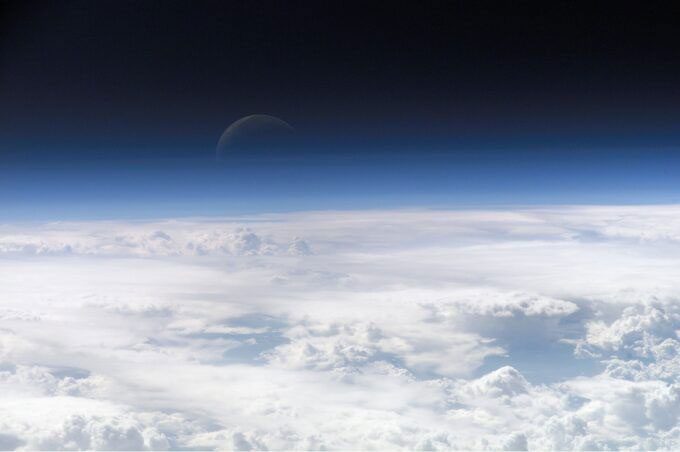The atmosphere above Earth is cooling too quickly, posing a risk of negative impacts on the ozone layer – our protective shield against burning.
Previously, scientists believed that greenhouse gases, particularly CO2, primarily affected only the lowest regions of the atmosphere. However, physicists now warn that we need to reevaluate this assessment.

The atmosphere above Earth – (Image: NASA EARTH OBSERVATORY)
According to the latest research by atmospheric scientist Benjamin D. Santer at the Lawrence Livermore National Laboratory (USA) and colleagues, the depth of the stratosphere has decreased by 400 meters over the past 40 years.
Additionally, the mesosphere and the lower thermosphere have shrunk by 1,341 meters between 2002 and 2019. This has been confirmed by Petr Pišoft, an atmospheric physicist at Charles University in Prague, through the analysis of NASA data.
The contraction of the atmosphere means it is less dense, reducing drag on satellites in low orbit. It also causes space debris to last longer and increases the risk of collisions. Currently, there are over 5,000 satellites in both high and low Earth orbits, not to mention the International Space Station (ISS).
Notably, ozone molecules in the atmosphere, which protect Earth from burning, will also thin out due to the contraction of the upper atmosphere.
“The increase in CO2 levels currently observed throughout the atmosphere is palpable. It is driving significant changes that scientists are just beginning to grasp,” warned Martin Mlynczak, an atmospheric physicist at NASA’s Langley Research Center in Hampton, Virginia.
This research was published in the journal PNAS, Proceedings of the National Academy of Sciences.
It is now known that in the atmosphere surrounding Earth, the rate of increase of CO2 concentration in the upper layer is as significant as in the lower layer.
In the lowest layer of the atmosphere, CO2 contributes to warming the Earth’s surface. Conversely, CO2 in the upper layer, combined with thin air, escapes into space, causing the atmosphere in this layer to shrink.


















































